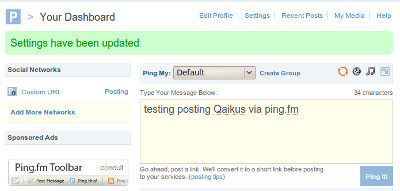Google Glass and the fear of the future

Google Glass is coming this year, a wearable display that can keep you connected at all the times and supply information and instructions when you need them. And it can record video or take pictures of whatever you see, when you want it to.
The privacy scare
Much of the Glass marketing focuses on the camera aspect, as does the criticism and fearmongering around it. Some feel that the device would bring about an era of ubiquitous surveillance and loss of privacy. Some even label these people as Luddites:
StopTheCyborgs and other Neo-Luddite groups make some pretty compelling arguments against AR, including the credible threat that people could be recorded at any time without their knowledge or permission. Nobody could ever consider conversation in the presence of Google Glass wearers completely private. Any entity that could tap into and process all the information from Google Glass on a minute-to-minute basis could track anyone or any conversation anywhere near the wearers. Google Glass may well begin the destruction of our current definitions of privacy.
The mislabeling aside (the historical Luddites were more concerned about machinery taking away their jobs, as they and globalization together eventually did), the criticism is generally baseless.
We live in cities filled with thousands of surveillance cameras monitoring our every move. We pay for our groceries with credit cards that leave a mark on everything you bought — when, and where — into a database. We carry smartphones that are constantly reporting their location back to the operator. We post our private pictures and current activities to social networks. There is very little privacy left. If you’d see how detailed information law enforcement can get out of our every movement from your operator, you’d know that too.
In a world where a hidden, pencil-shaped spy camera can be bought for about 30$, is a very obviously visible Google Glass device really the biggest risk to privacy? And yet, places are banning them already, a lot before they actually hit the market.
This is the future
The anti-Glass movement has a benefit. While not exactly a flying car, it is yet another sign that we’re living in the future that science fiction authors envisioned. I mean, consider the fact that there is A movement to ban cyborgs.

They even sell stickers.
Consider the possibilities
Since the privacy battle is already lost, shouldn’t we instead focus on the possibilities they can bring? While Google has shown very little of the capabilities of the Glass software apart from videoconferencing and making web searches, various books can provide clues.
Many of them describe a world where you can share with anybody what you see with your own eyes, or access any information without having to hold a bulky device.
It is a little hard to provide good context of the use cases from the books just by short snippets, but here are some. Feel free to provide your own in the comments.
In Daniel Suarez’s Daemon series, Glass-like devices are used for connecting and coordinating a full economy, called the Darknet. Here is a view of an office with augmented reality displays and motion controls:
The center of the room looked to be a staging area, bustling with your people, all wearing eyewear and gloves. To the side was a raised platformn lined with office chairs where a dozen people were grabbing, pulling, and pushing at invisible objects in the air. They were all speaking to unseen people, as though it were a call center.
I could easily imagine manipulating my flow based programs in this way.
The Daemon series also feature other Google products, like driverless cars and an augmented reality game much like Ingress.
Vernor Vinge’s Rainbows End has everybody using augmented reality glasses as an everyday matter. They even change how you see a city like Barcelona:
Vaz strolled to the stone barrier and looked down. If he blocked out all the tourism fantasy [augmented by the Glass], he could see the freight harbor almost two hundred meters below and a kilometer away. The place was an immensity of freight containers rambling this way and that, chaos. If he invoked his government powers, he could see the flow of carge, even see the security certificates…
And of course people interact with the augmented reality projections of others just like they were present:
Even when her friends were gone physically, they were often still around, invisible presences [without the Glass] like Robert’s doctors. Miri walked around the backyard talking and arguing with nobody—a parody of all the cellphone discourtesy that Robert remembered
For the less pleasant view of something like Glass, Neal Stephenson’s Snow Crash focuses on the surveillance aspects, with people using AR displays being called Gargoyles:
Gargoyles are no fun to talk to. They never finish a sentence. They are adrift in a laser-drawn world, scanning retinas in all directions, doing background checks on everyone within a thousand yards, seeing everything in visual light, infrared, millimeter-wave radar, and ultrasound all at once. You think they’re talking to you, but they’re actually poring over the credit record of some stranger on the other side of the room, or identifying the make and model of airplanes flying overhead.
Then again, talking with a Facebook addict can already be a lot like that.
How this will play out
If the glass does what people want it to do, it will become popular.
Just like we’ve taken smartphones and tablets into our lives and homes, eventually we will live in a world where you will feel naked if you step out of your home door without the glass on. How am I supposed to connect and communicate now?
I’d love to have Glass, even if it is clunky in the beginning.
Wearable computing is one of the possible trajectories we’re going with, from room-sized mainframes to desk-bound personal computers to these amazing small slabs of glass and antennas we now carry in our pockets.
Just like with smart spaces, or tablets many years ago, I’m keen to explore the new interaction possibilities.
